Industry News
This month,
as part of our new Corrosion Management Journal Tutor feature,
we are profiling
Chris Wozencroft, CP Level 1, 2 and 3 Concrete Tutor.

Chris Wozencroft
BSc, CEng MICE, MCIOB, MICorr, BS EN ISO 15257, Level 4 Senior Cathodic Protection Specialist and Principal Engineer – Corrosion Engineering Solutions Ltd
Unit S1, 64-66 Akeman Street
Tring, Hertfordshire, HP23 6AF
chris.wozencroft@corrosionengineering.co.uk
www.corrosionengineering.co.uk
Chris Wozencroft is an experienced Forensic Civil Engineer, with a focus on corrosion problems and is a leading expert in the diagnosis and treatment of Regent Street Disease – the corrosion of the steel frames within masonry clad buildings. These steel frames were at their most popular from the late 1890s to around 1950, when construction methods changed.

He graduated from Loughborough University in 2007 where he gained a Bachelor of Science (BSc) in Construction Engineering Management and prior to working in consulting, Chris was engaged at the hard end of the industry as a site engineer on heavy civil engineering projects.
His current employment is Corrosion Engineering Solutions Ltd where he works as a Technical Director. He has expertise in investigating and diagnosing defects in structures and buildings and has designed cathodic protection systems to protect many buildings and bridges in the UK [including Grade 1/A, Grade II* historic structures].
Chris is a dedicated technical tutor with extensive experience of training graduates, apprentices and placement students – including delivering many Level 1, 2 and Level 3 cathodic protection courses for ICorr. He is extremely passionate about making technical training available to all, with an energetic and uncompromising style.
Chris has been teaching ICorr courses since 2016 after gaining his ICorr Level 4 Certification in 2014. He finds the opportunity to improve the knowledge and skills of those working in CP in the construction industry immensely rewarding and enjoys meeting new people and nurturing new talent. For him, the best part is seeing someone discover a new path they had not previously considered and then helping them realise their potential.
ICorr is always interested in hearing from CP Level 4 professionals who are ready to take the opportunity to help progress their industry colleagues. Would you be able to join us? If yes, please contact: Cathodic Protection Scheme Manager Email: cpsm@icorr.org
Photo 2: Building Steel Frame Corrosion – Image Courtesy of CPA (Corrosion Prevention Association).

Photo 3: Concrete CP Installation at ICorr Telford Training Centre.
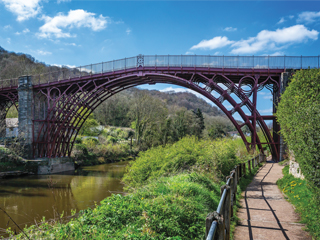
Industry News
By our Editor, Dr. Shagufta Khan, PhD, FICorr

World Environment Day, organised by the UN Environment Programme (UNEP), is the biggest worldwide environmental event, having been established by the UN General Assembly in 1973. Every year, millions of individuals from governmental bodies, corporations, civil society organisations, and academic institutions take part in environmental awareness campaigns and action plans with the goal of safeguarding the planet’s future.
The theme for 2024, “Our Land, Our Future. We are #Generation Restoration,” emphasises the importance of restoring land, combating desertification, and enhancing resilience to drought. Due to desertification, up to 40% of the world’s land is currently damaged, affecting about 3.2 billion people worldwide. Furthermore, estimates indicate that drought will affect more than three-quarters of the world’s population by 2050.
Corrosion and CO2 Emissions: Corrosion of metals, particularly steel, leads to significant CO2 emissions due to the need for replacement and maintenance of corroded structures. Maintenance due to corrosion accounts for an estimated 3.2% of global CO2 emissions (C. Hoffmann, 2020).
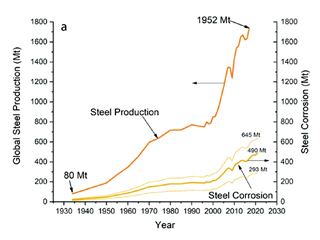
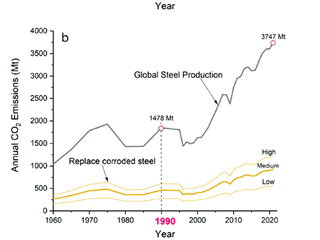
Synergy Between Land Restoration and Corrosion Technology
-
Reducing Environmental Footprint: Use of advanced sustainable ecofriendly corrosion protection solutions helps reduce the environmental impact of industrial activities by:
-
Lowering greenhouse gas emissions.
-
Decreasing the need for raw material extraction and processing.
-
Reducing toxic waste and contamination from traditional corrosion prevention methods.
-
Supporting Sustainable Development Goals (SDGs): By minimising the environmental impact of industrial maintenance and extending the lifecycle of infrastructure, corrosion technology contributes to:
-
SDG 9: Building resilient infrastructure, promoting inclusive and sustainable industrialisation and fostering innovation.
-
SDG 11: Making cities and human settlements inclusive, safe, resilient and more sustainable.
-
SDG 12 : Ensuring sustainable consumption and production patterns.
-
SDG 13 : Taking urgent action to combat climate change and its impacts.
-
Promoting Circular Economy: Utilising recycled materials in production of corrosion protective products (coating/corrosion inhibitors) aligning with circular economy principles, enhancing resource efficiency and reducing waste.
-
Enhancing Land Restoration Efforts: Reducing industrial emissions and waste, supports broader environmental restoration initiatives by:
-
Improving soil and water quality.
-
Mitigating climate change impacts.
-
Reducing air pollution.
Call to Action
-
Adoption of Sustainable Technologies: Industries should integrate advanced, sustainable corrosion technologies to reduce their environmental footprint and support global restoration efforts.
-
Alignment: By aligning the goals of World Environment Day with advancements in corrosion technology, we can make significant strides towards a sustainable and resilient future. This integrated approach not only addresses immediate environmental challenges but also sets a foundation for lasting positive impacts on our planet.
-
Invest in Research and Development: Continued investment in R&D for innovative corrosion prevention solutions is crucial for achieving long-term environmental and economic benefits.
-
Promote Awareness and Collaboration: On World Environment Day and beyond, stakeholders should raise awareness about the importance of corrosion technology in environmental sustainability and collaborate to implement best practices.
Sources
- https://impact.nace.org/economic-impact.aspx NACE International. (2016, March 1st). Economic Impact.
- https://sdgs.un.org.
- https://www.mckinsey.com/industries/metals-and-mining/our-insights/decarbonization-challenge-for-steel C. Hoffmann, M. V. (2020, June 3rd). Decarbonisation challenge for steel. Retrieved from McKinsey & Company.
- https://www.nature.com/articles/ . The carbon footprint of steel corrosion.
- https://www.unep.org/ietc/events/un-day/world-environment-day-2024.
Figure 1: Influence of Steel Production and Corrosion on CO2 Emissions.

Industry News
By Dr. Jane Lomas
FICorr, Amtec Corrosion Ltd. Honorary Secretary UK Institute of Corrosion
How My Life in Rust Started?
Way back in the late 1970’s, I saw an advertisement for an M.Sc. degree in corrosion engineering at the University of Manchester Institute of Science and Technology (UMIST) and applied. I was accepted into the course and enjoyed learning about corrosion with my fellow students from around the globe. The M.Sc. was completed in 1979 and was followed by a Ph.D. in corrosion under automotive paint. Among other techniques, I was involved with a new and novel electrochemical method called a.c. impedance (now known as impedance spectroscopy) and the early days of electrochemical noise.
At that time, personal computers were still being developed, and there was much time and effort needed to work the equipment and draw our graphs by hand. Electrochemical noise data was captured on rolls of chart paper! Compared with the rapid, automated methods available now, research was a slow process, but it was good to have been involved with the start of using these techniques to investigate corrosion.
My Ph.D. work was followed by research contracts into repair methods of re-bar in concrete; energy transmission through metals and paints due to impact and abrasion; water treatment chemistry; etc. During the pleasant days of research life, it slowly became apparent that I would eventually have to find a “proper job” in the future.
Starting Work
My (late) colleague Dr. Les Callow and I formed a small business, making corrosion monitoring instrumentation and specialist probes. Over the next couple of years, we were asked to carry out more and more laboratory tests for clients using the equipment we manufactured. At the same time, we began working on the first of many failure investigations and after a few years, consultancy became our full-time work.
The Institute of Corrosion
In the early 1990’s, women were rare in the corrosion world, so I applied for (and obtained) professional membership in the Institute of Corrosion. This added further credibility to the growing CV of a young female engineer in the late 1980s.
Joining the North-West branch of ICorr in 1994 increased my network of contacts. I was able to listen to experienced and knowledgeable speakers; develop my own skills in giving talks; and had the opportunity to organise half day branch events. All of which were good experiences for a young corrosion engineer. I have stayed on North-West committee since that time and made many new friends through my participation there.
General Corrosion Consultancy is Varied!
Over the past 40 years, there have been many unusual and enjoyable cases in my working life. Potential clients often call or email with strange and interesting questions. Such as: “Why does my pipe have a hole in it”? They are surprised when you ask for more information!
“Someone threw an old rusty bicycle into my garden. Is that why my gate has now gone rusty”? There is an idea that there is some sort of “rust virus” which can be transmitted from one item to another.
The Corroded Sample
After agreeing to take on a job, some clients suggest they send you a section of the corroded item for investigation in the laboratory. Sometimes it is larger than you expect. This one was nearly 2
metres tall!
The part that we needed for the investigation was a small section of a heat exchanger, but the client did not want to remove it themselves, so they sent the whole item. It was literally dropped off outside the front door of our office building, and we had to cut it up to remove it from the road!

The Highlights of my Life in Rust
-
A client insisting that we fly to the USA on Concorde for an urgent meeting.
During my career, there have been, and continue to be, many fun aspects to the job:
-
For example, examining the corrosion of the rivets at the very top of Blackpool Tower.
-
Going through the Panama and Suez canals on a ship carrying a full load of jet fuel.
-
Enjoying a new challenge every week; in consultancy work, every job is different and sometimes it feels like being Sherlock Holmes, trying to find out how and why the rust and other deterioration mechanisms my have occurred.
The Less Exciting Jobs
-
At one time, it was not unusual to travel for 27 hours to the job and then be expected to work for the next 12 hours. Thankfully due to Health and Safety regulations that is less common these days.
-
Being covered in cargo whilst inspecting ships; I’ve been black with coal dust, white from china clay, red from iron ore, sticky with sugar and slipped about on soya beans!
-
Industrial composters leave an odour in your clothes and car that can take days to remove.
- Investigating corrosion in sewage tanks.
Common Challenging Aspects of the Corrosion Engineers Job
-
Almost anything related to cherry pickers. (Wind, rain, missing tyres, inexperienced drivers, the engine suddenly cuts out with the basket in the up position).
-
The Host asks “Do you want anything to eat?” Then says “Oh sorry, the canteen closed half an hour ago”.
-
Waiting for several hours for access to the site and then being allowed only 2 hours to complete a 6-hour inspection plan.
- Almost anything related to cherry pickers.
- A constant challenge for female engineers:
-
Ladies toilets? “Walk about 1Km that way. You could use the Gents, but …”
What Next?
After 40 years in corrosion, I’m still working and enjoying the challenges.
Continuing to be an active member of the NW Branch committee, the Current Honorary Secretary and a Trustee of the Institute. A new opportunity awaits in September 2024 as l assume duties of the STSM – Surface Treatment Scheme Manager from John Fletcher who after many years of excellent work is now retiring from this key role in ICorr.
Taking the opportunity to help the next generation of corrosion engineers through the YEP (Young Engineers Programme) and providing information and education about corrosion via the ICorr FOCE (Fundamentals of Corrosion for Engineers) course to assist those seeking Professional ICorr membership and people who want to know more about the different aspects of corrosion.
“A Life in Rust” can be active and challenging through site work or much warmer and drier in a laboratory or classroom.
Anyway, it is never boring for sure.

Jane Lomas Delivering Her Lecture at ICorr YEP Launch in London on
25th January 2024.
Industry News
By Sarah Bagnall, CEng, MRes, BEng, MIMMM, Director R-Tech Consultancy Services
Material:
A106 Grade B.
Environment:
Nozzle contained both steam and process water used for both heating and cooling.
Operating Pressure:
10 bar.
Operating Temperature:
185oC.
Corrosion Mechanism:
Stereomicroscopy revealed localised ‘Mesa’ type attack of the weld area along the internal surface. Analysis of the corrosion deposit revealed the presence of iron carbonate. Mechanism was deduced to
be CO2 Corrosion.
Editor’s Notes
The economic impact of CO2 corrosion is well-documented, prompting the industry to implement various mitigation strategies over the years. However, as exploration expands into new fields with higher temperatures, pressures, and diverse fluid compositions, it is crucial to continuously assess and improve the corrosion resistance of both existing and new materials.
In the oil and gas industry, the presence of carbon dioxide (CO2) in fields poses a significant challenge due to its potential to cause severe corrosion, especially when water is present. While dry CO2 in either gas phase or supercritical fluid form is not corrosive to metals and alloys, the introduction of water-containing fluids leads to the formation of carbonic acid, which can rapidly corrode infrastructure.
The extent of CO2-induced corrosion is influenced by several key factors: Concentration of CO2 (and other components like H2S),
Water Chemistry, Operating Conditions, Material Type.
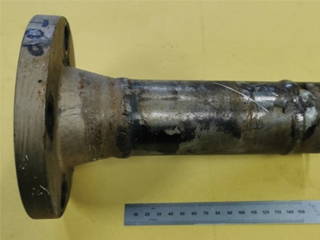
Picture 1: Nozzle Extracted from a Heat Exchanger Vessel Due to Pinhole.

Picture2: Internal Surface of Pinhole Location.

Picture 3: Internal Surface of Circumferential Weld, Detailing Localised Attack

Picture 4. Internal Surface of Circumferential Weld, Detailing Localised Attack
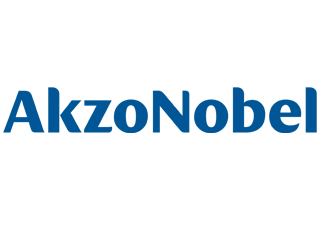
Industry News
AkzoNobel launched its first single layer powder coating for two-wheelers – Interpon A3000. Interpon A3000 is focused on the key Indian market, home to well over 200 million two-wheeled vehicles. Last year alone, it’s estimated that more than
18 million two-wheelers were sold in India. The product will
also be available globally.
One of the key features of the product range is its durability. It helps prevent corrosion, combats interference from fuel, oil and other chemicals, and offers high resistance to chipping from stones and pebbles – all of which helps keeps two-wheelers and other vehicles looking better for longer.
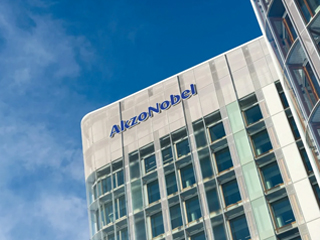
Source: https://www.akzonobel.com/
